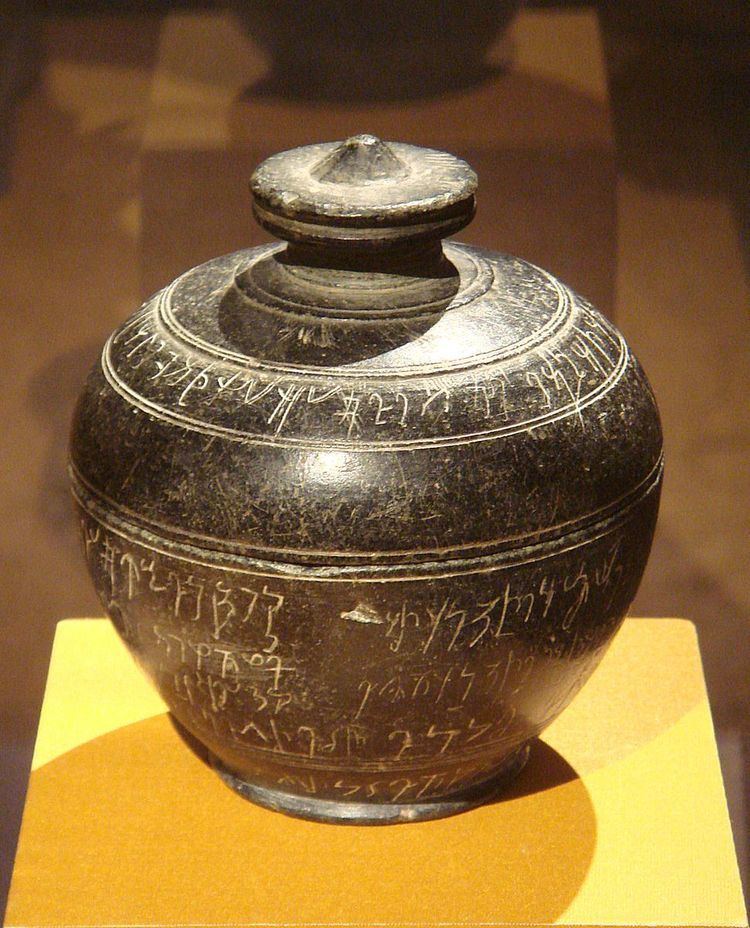 | ||
The Bajaur casket, also called the Indravarma reliquary, year 63, or sometimes referred to as the Avaca inscription, is an ancient reliquary from the area of Bajaur in ancient Gandhara, in the present-day Federally Administered Tribal Areas of Pakistan. It is dated to around 5-6 CE. It proves the involvement of the Scythian kings of the Apraca, in particular King Indravarman, in Buddhism. The casket is made of schist.
The inscription which is written in Kharoshthi, translates into English as:
"In the sixty-third (63) year of the late Great King Aya (Azes), on the sixteenth day of the month Kartia (Karttika); at this auspicious (?) time, Prince Idravarma (Indravarman), son of the King of Apraca, establishes these bodily relics of Lord Sakyamuni in a secure, deep, previously unestablished place; he produces brahma-merit together with his mother Rukhunaka, daughter of Ai (and) wife of the King of Apraca, with (his) maternal uncle Ramaka, with (his) maternal uncle's wife Dasaka, with (his) sisters and wife --Vasavadatta, Mahaveda, and Nika, and (his) wife Utara. And (this is done) in honor of (his) father Visnuvarma. The King of Avaca (Apraca) 's brother, the Commander Vaga is honored, and Vijayamitra, (former) King of Avaca. (His) mother's sister, Bhagidatta is honored. And these bodily relics having been brought in procession from the Muryaka cave stupa, were established in a secure(?), safe, deep(?) depository, (in) the year twenty-five."
The inscription was highly useful in clarifying the little-known Apraca dynasty.
